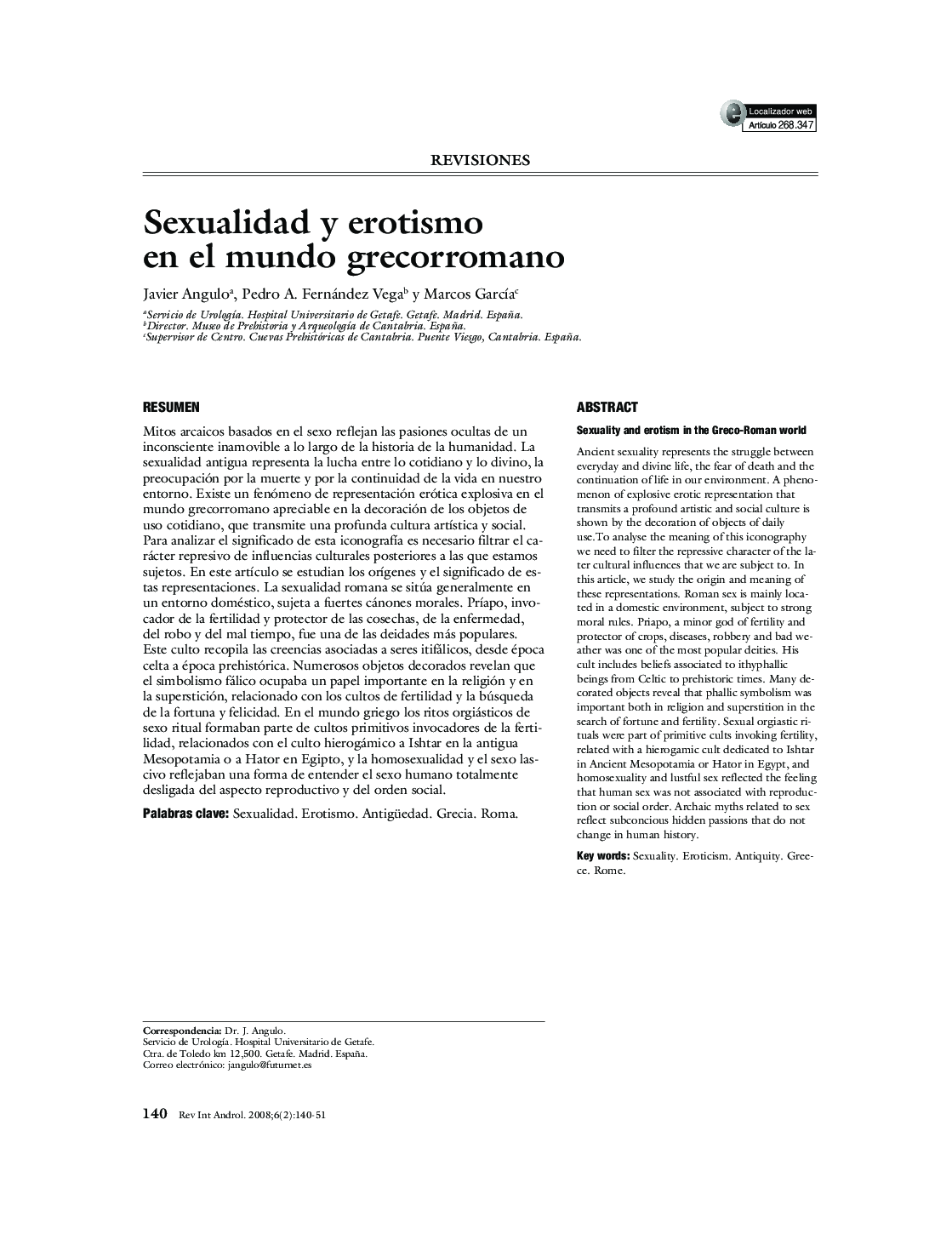| Article ID | Journal | Published Year | Pages | File Type |
|---|---|---|---|---|
| 916063 | Revista Internacional de Andrología | 2008 | 12 Pages |
Abstract
Ancient sexuality represents the struggle between everyday and divine life, the fear of death and the continuation of life in our environment. A phenomenon of explosive erotic representation that transmits a profound artistic and social culture is shown by the decoration of objects of daily use.To analyse the meaning of this iconography we need to filter the repressive character of the later cultural influences that we are subject to. In this article, we study the origin and meaning of these representations. Roman sex is mainly located in a domestic environment, subject to strong moral rules. Priapo, a minor god of fertility and protector of crops, diseases, robbery and bad weather was one of the most popular deities. His cult includes beliefs associated to ithyphallic beings from Celtic to prehistoric times. Many decorated objects reveal that phallic symbolism was important both in religion and superstition in the search of fortune and fertility. Sexual orgiastic rituals were part of primitive cults invoking fertility, related with a hierogamic cult dedicated to Ishtar in Ancient Mesopotamia or Hator in Egypt, and homosexuality and lustful sex reflected the feeling that human sex was not associated with reproduction or social order. Archaic myths related to sex reflect subconcious hidden passions that do not change in human history.
Related Topics
Health Sciences
Medicine and Dentistry
Surgery
Authors
Javier Angulo, Pedro A. Fernández Vega, Marcos GarcÃa,
